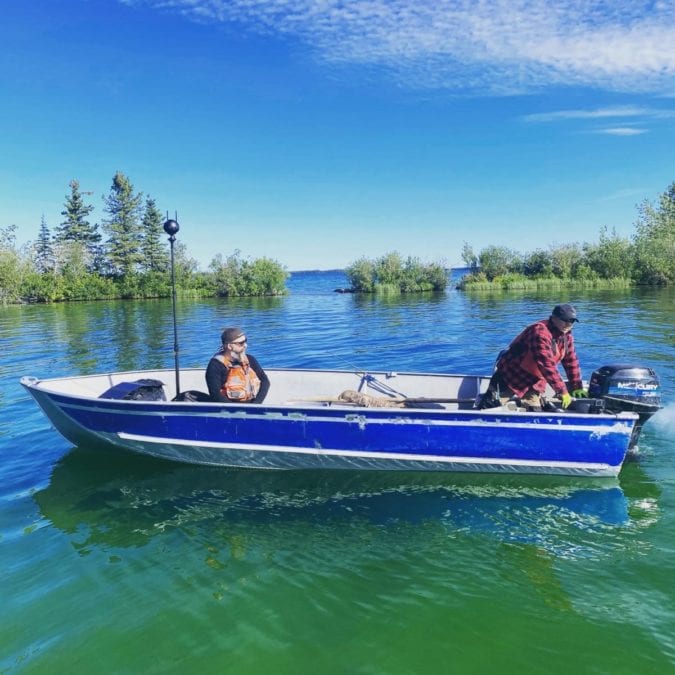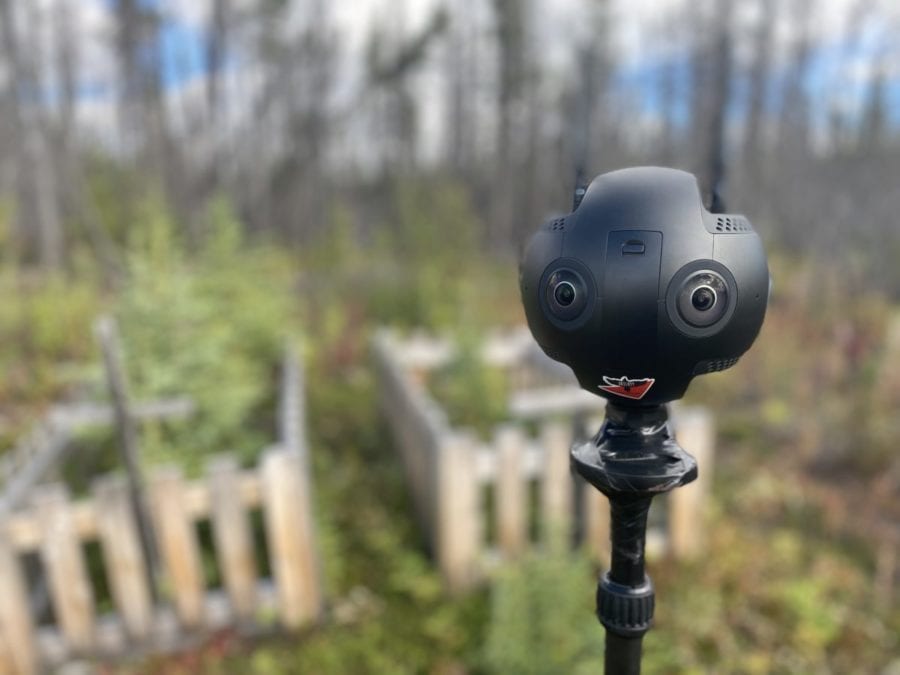In a groundbreaking pilot project, the Tlicho government and Yellowknife based production company Artless Collective are teaming up to create an interactive virtual map of the Whati area.
Using 360-degree mapping technology and audiovisual storytelling, the project is part cultural storytelling tool, part Google-street view for remote Whati waterways, and, as an experiment, is many parts unknown.
Artless Collective co-founders Jay Bulckaert and Pablo Saravanja have spent the last several weeks filming and gathering footage from the Whati peninsula, through the river to the Whati falls and down to Behchoko. Now they are working with Elders and community members to add cultural and personal stories to significant landmarks.

Once it's completed, users of the tool will be able to "click up" the river, similar to how the Google Maps street view interface works, but will also be able to stop at marked milestones to read or listen to stories of harvest sites, grave sites and other sacred landmarks.
Bulckaert says the goal is to make the website a “living document” where community members continue to add information and stories to expand the tool.
“The idea is that it will continue to grow, it will never be finished, just continue to be updated,” Saravanja said.
In speculating other possible uses for the project, Saravanja suggests a trapper could watch martens enter its trap from 360 degree angles to learn more about their patterns or it could document how much water goes over the falls. That could be compared to baseline data.

He emphasizes though, that this is Tlicho’s project and that they are working with Tlicho filmmakers, storytellers, and community members interested in the technology to pass it along as they build the template.
Trails of our Ancestors
The idea was born out of brainstorming alternatives to Tlicho’s annual Trails of our Ancestors canoe trip.
Since 1993, the trip has supported about 100 yearly participants to paddle between various communities, be on the land, and spend time learning from Elders.
Paul Cressman, Tlicho government program development officer, says that when they had to cancel the trip due to the pandemic, Tlicho reached out to Artless Collective to create a digital alternative.
He says the initial idea was just to strap a GoPro camera to someone's head and send out a small group to paddle up to Wekweeti, which is where this year’s annual gathering was scheduled to happen. After speaking with Bulckaert and Saravanja it became clear that the idea “was just scratching the surface.”
Bulckaert and Saravanja suggested they work with Helios Design Labs, a multi-disciplinary design studio in Toronto with whom Artless Collective created The River of Forgiveness project – a multimedia webpage telling the story of Dene families’ journey down the Nahanni River in a moose hide boat.
With Tammy Steinwand, culture and lands protection director for the Tlicho government, the idea went from “just a linear film” to “a really powerful interactive tool to gather and protect cultural knowledge and language preservation,” Cressman says.
He says on top of its teaching value, it will allow elders who are physically unable to travel to sites that have been significant to them in high resolution and detail.
One challenge they’re facing is privacy concerns over who owns information on the internet.
They are looking into protecting certain stories and pieces of the site since there may be certain locations that Cressman says the Tlicho may not want everyone in the world to know about.
“We're rubbing up against this idea of very modern information sharing, mixed with ancient knowledge and ways of knowledge transfer that in some cases, is a close kept secret.”
The stories, he says, are “highly significant to communities but not necessarily meant for everyone.”
Bulckaert and Saravanja are hoping to launch the site next summer though they say it could be longer.
They say the technology is new to the entire world and figuring out its uses and challenges, especially in a remote area on a tight timeline, has had its difficulties.
They suspect they will return to Tlicho in the spring to gather more materials and have been collaborating with Helios throughout to ensure they’re on the same page about gathering the footage they’ll need to put the project together.
Helios creative director Alex Wittholz says he’s still working to conceptualize how the stories might be told in the technology. He says that while he has an idea of the final product, as the project progresses things change.
“We know what we want it to be, but we still have to find what it needs to be, or what it wants to be.”
He says that often once a project is successfully completed, it seems like it couldn’t have been any other way. In reality, he says, the creative process of one of subtraction where you continue to eliminate what isn’t needed until “only the essential stuff is left.”
The Tlicho government is providing bridge funding for the project at the offset, but Cressman says it is with the understanding that they will look for outside funding in the future.
If the project is a success, the collaboration could extend to mapping other routes in the Tlicho region.
“This digital landscape will continue to become more and more rich and more and more full of knowledge and information that that will be accessible to anyone,” Cressman says.